
Your Compass in Venice 2025
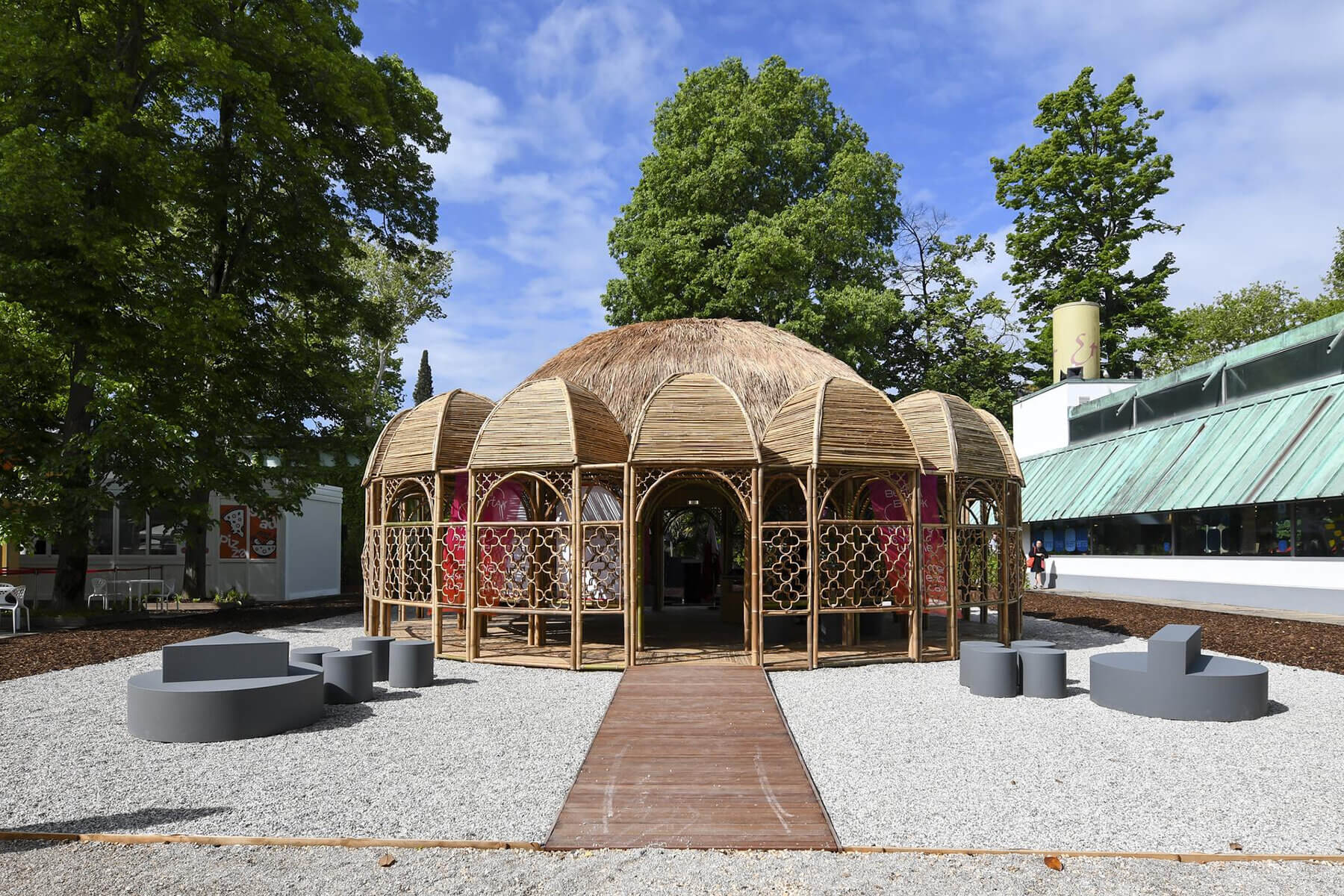
The 19th International Architecture Exhibition, “Intelligens. Natural. Artificial. Collective”, curated by architect and engineer Carlo Ratti, presents a dynamic, interdisciplinary landscape, bringing together over 750 contributors – architects, engineers, scientists, artists, designers, and more – each offering distinct insights into the challenges of adaptation. The exhibition has been developed with an open selection process led by a cross-disciplinary team. The participant cohort spans generations and disciplines – from Nobel laureates and Pritzker Prize winners to innovative graduates – creating a richly textured collective of knowledge.
This edition redefines authorship, shifting from individual genius to shared intellectual effort, echoing the collaborative ethos of scientific inquiry. In response to today’s complex global conditions, it fosters institutional partnerships – with COP30, C40, the Davos Baukultur Alliance, and others – while its public programme, Gens, activates discussion and engagement across scales and communities. This year, there are 66 National Participations. 26 organise their exhibitions in the historic Pavilions at the Giardini, 22 at the Arsenale, and 15 in various locations throughout the Venice city centre, along with 11 Collateral Events. The Republic of Azerbaijan, the Sultanate of Oman, Qatar, and Togo participate for the first time.
During the Art and the Architecture Exhibitions, Venice always inaugurates a vast number of exhibitions throughout the increasingly numerous cultural institutions that are populating the city. We have put together an itinerary to serve as a compass, guiding you through Venice and its landmarks while highlighting this year’s most interesting exhibitions, including those hosted at the Giardini and Arsenale.
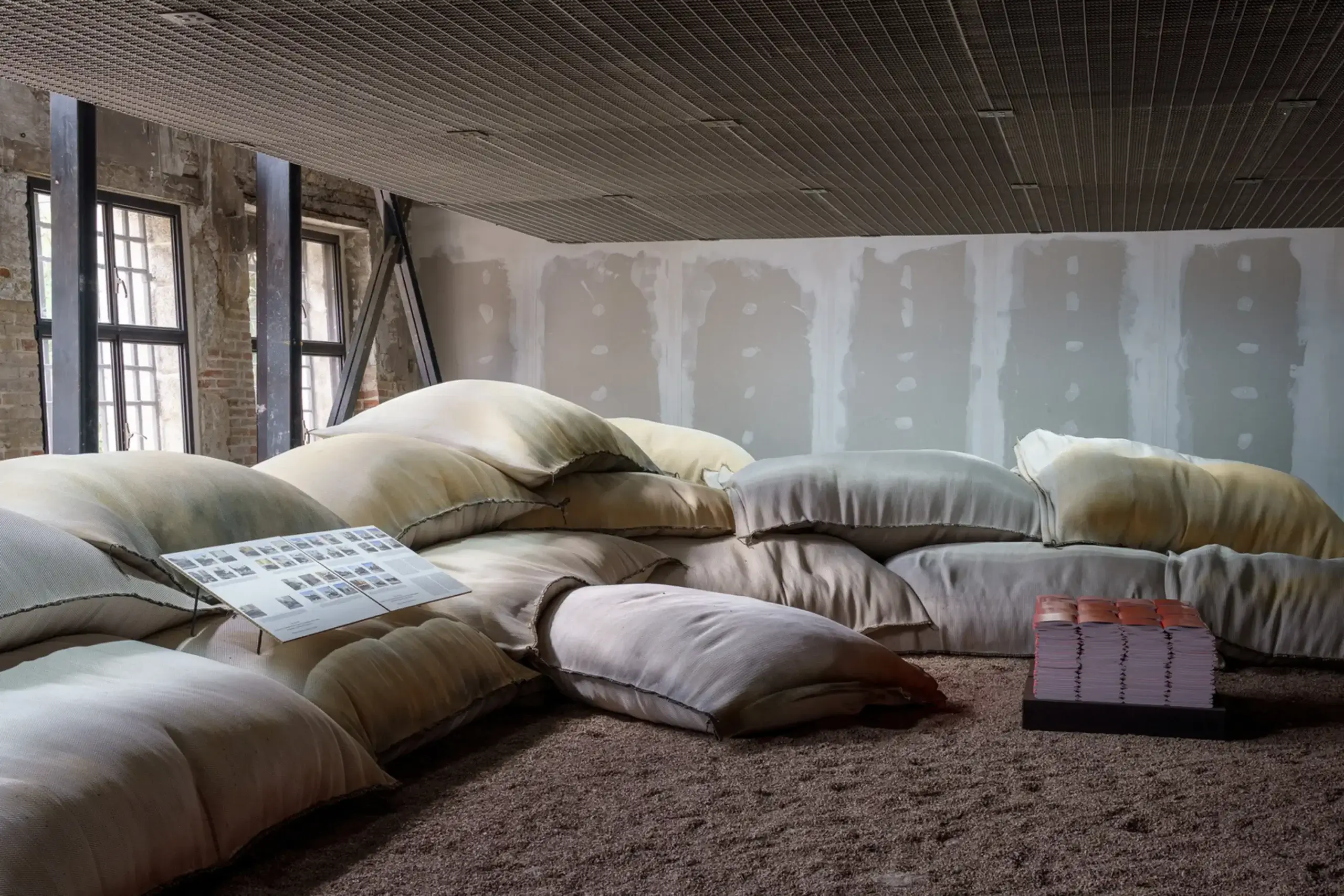
GIARDINI/CASTELLO (SANT’ELENA)
Castello is the largest and one of the most authentically “Venetian” districts of the city, maintaining a strong local character. It comes alive during the Biennale, as international art and architecture aficionados gather with locals over a well-deserved post-Giardini spritz on Via Garibaldi. With the Central Pavilion under renovation, Venice itself becomes a Living Lab – a real-time experiment in climate resilience and urban adaptation. Spread across the city’s neighbourhoods, canals, and historic sites, installations and projects transform Venice into an active testing ground for sustainable solutions. From canal purification to indigenous housing models and reimagined aquatic mobility, the Living Lab blurs the line between exhibition and action, positioning Venice as both subject and solution in the climate conversation.
Alongside the historic national pavilions housed in the Giardini of the Biennale – some of which were designed by architectural luminaries such as Alvar Aalto for Finland – a new building is being constructed for the first time since 1995. Designed by Lina Ghotmeh, it will become the Qatar Pavilion in 2026; during this Biennale, the future pavilion site hosts Yasmeen Lari’s bamboo Community Centre installation.
A few steps away from the Giardini, in via Garibaldi, gallery 10 & zero uno presents “The Shed”, a solo exhibition by British artist John Robinson.
Not far from the gardens, you can take a break at Osteria San Isepo, a warm, family-friendly spot where guests can enjoy traditional Venetian dishes in a fresh, youthful atmosphere that also reflects Venice’s international outlook.
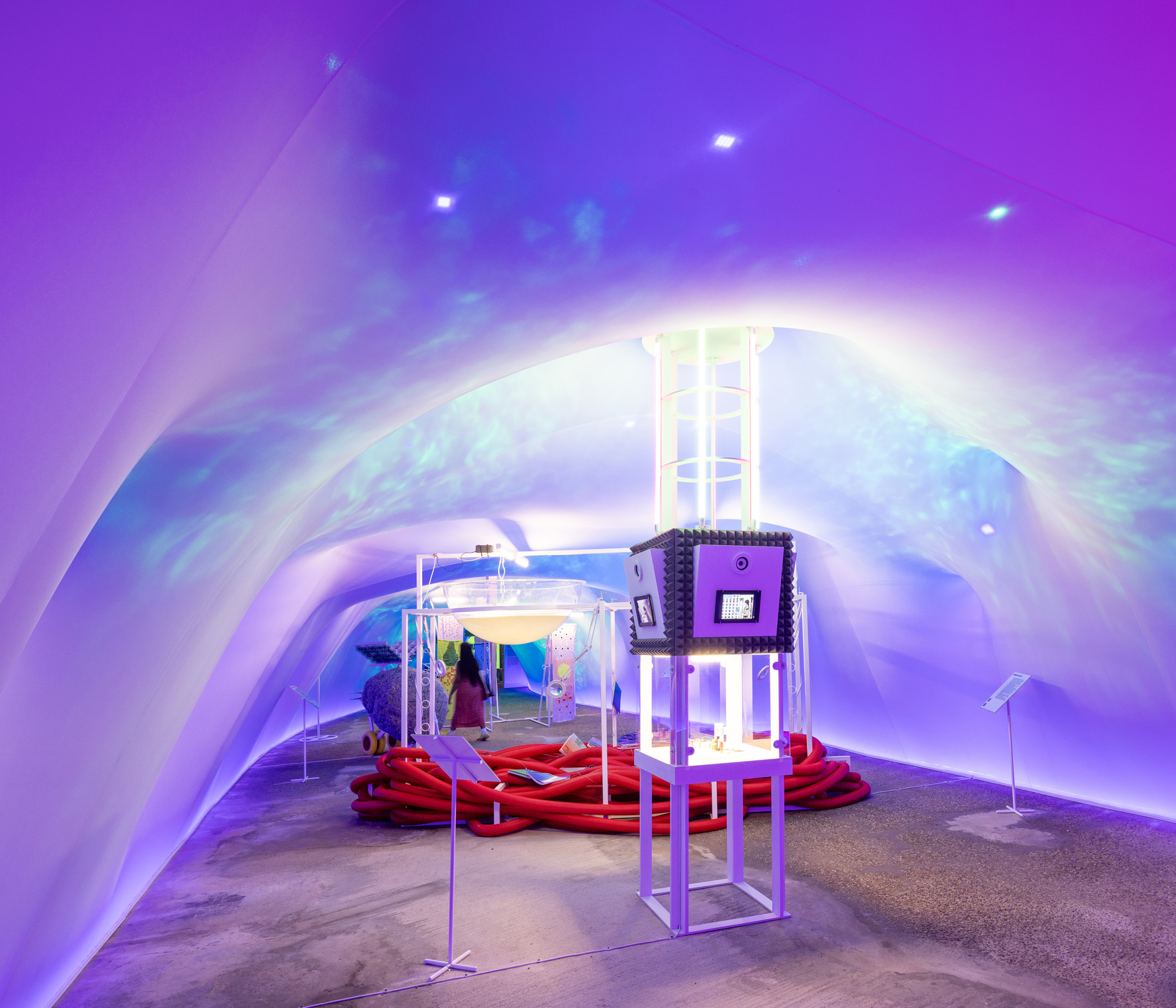
ARSENALE/CASTELLO
La Biennale di Venezia and the Victoria and Albert Museum, London present for the ninth consecutive year the Applied Arts Pavilion Special Project titled On Storage, curated by Brendan Cormier in collaboration with Diller, Scofidio + Renfro (DS+R). The Italian Pavilion at the Tese delle Vergini in the Arsenale is curated by Guendalina Salimei with the project “Terrae Aquae. L’Italia e l’intelligenza del mare”.
Right in front of the entrance of the Arsenale in Campo della Tana, you’ll find the first Azerbaijani Pavilion to participate in the International Architecture Exhibition, along with the official Collateral Events: “Projecting Future Heritage: A Hong Kong Archive and Parallel Worlds, Exhibition from Macao, China”. Close to the Basilica di San Pietro di Castello, at the Docks Cantieri Cucchini, is the Collateral Event “Catalonia in Venice – Water Parliaments: Projective Ecosocial Architectures” produced as always by the Institut Ramon Llull. The Holy See Pavilion this year is held in the Complesso di Santa Maria Ausiliatrice. The exhibition is titled Opera aperta and curated by Marina Otero Verzier and Giovanna Zabotti.
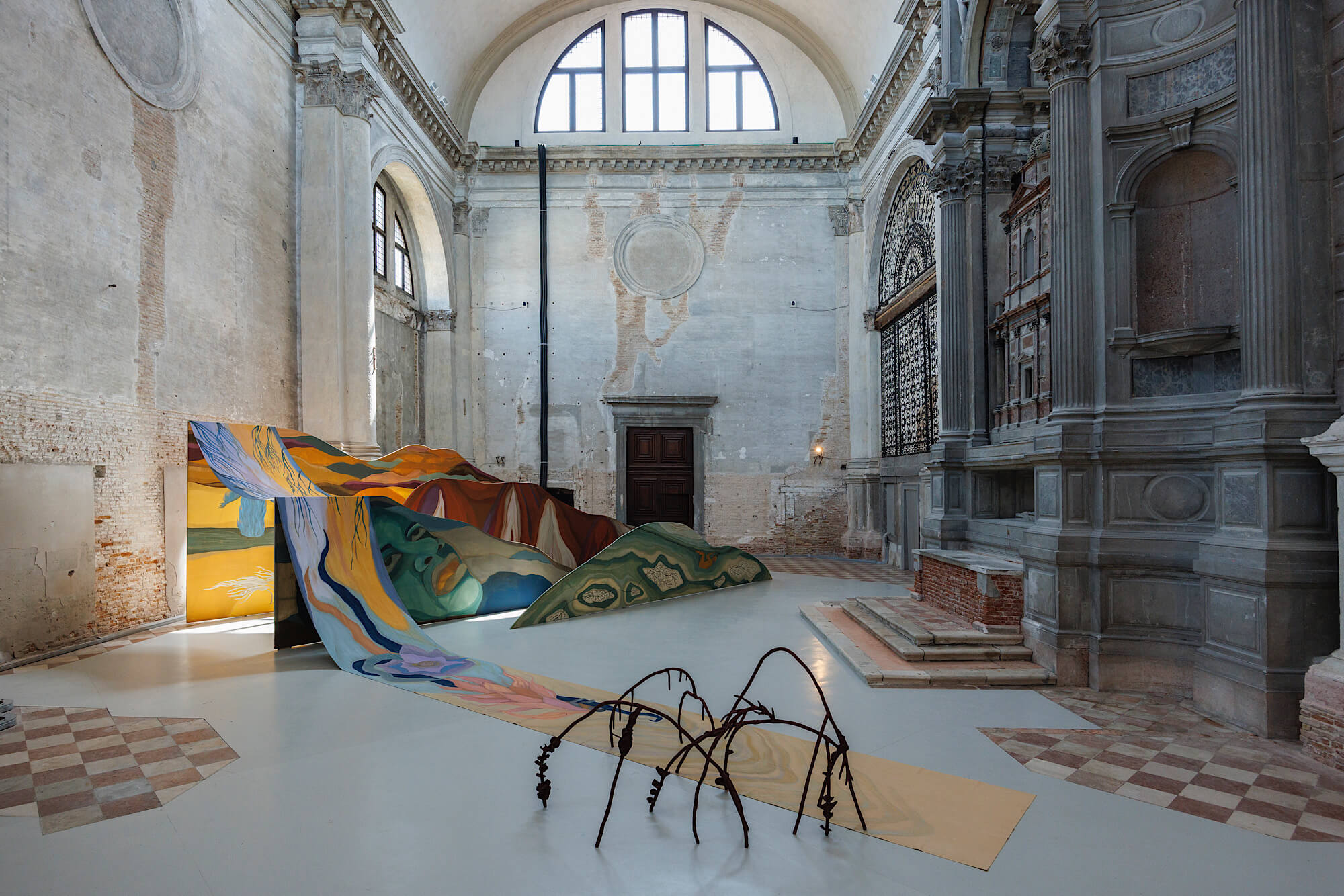
CASTELLO/SAN MARCO
Walking past the entrance of the Arsenale, you’ll come upon its historic gateway, constructed after the 1571 victory at the Battle of Lepanto and watched over by four imposing stone lions. Continuing in this direction, not far ahead you will come across Spiazzi Cultural Association, a favourite of the local Venetian cultural scene; Spiazzi again this year hosts the Cyprus Pavilion. Also nearby is the Collateral Event “Deep Surfaces. Architecture to Enhance the Visitor Experience of UNESCO Sites”, hosted at Palazzo Zorzi and organised by UNESCO.
Heading in the direction of San Marco and nestled between the narrow calle of Castello, you will find the Church of San Lorenzo, where Ocean Space has reintegrated the historic church into the cultural fabric of Venice. Here, you will find the exhibition “otras montañas, las que andan sueltas bajo el agua [other mountains, adrift beneath the waves]”, curated by Yina Jiménez Suriel.
Just next door, La Fucina del Futuro hosts the Collateral Event “The Skywalk” produced by Platform Earth. Continue on to Fondazione Querini Stampalia, where the new director Cristiana Collu is working to make this ancient and prestigious institution flexible, sincere, democratic, multicultural, contradictory, and bold. This year’s contemporary proposal presents in the campo Santa Maria Formosa, just in front of the foundation, Davide Rivalta’s famous lions, and continues inside with John Baldessari’s exhibition and Martí Guixé’s installation. Here, you can stop at Ozio, enjoying natural wines and cicchetti, or venture further into the Castello district to discover the menu and offerings at Pietra Rossa.

SAN MARCO/DORSODURO
Once in Piazza San Marco, head to the Negozio Olivetti, designed by architect Carlo Scarpa, which this year hosts “Ore Streams: The Shape of Things to Come” by FormaFantasma, curated by Bartolomeo Pietromarchi. Next door, SMAC – San Marco Art Centre, a new contemporary visual arts center, has just been inaugurated; directed by Anna Bursaux, David Gramazio, and David Hrankovic, it is located on the second floor of the Procuratie, recently restored by David Chipperfield.
At the opposite end of Piazza San Marco, Museo Correr is presenting this year the exhibition “Il Correr di Carlo Scarpa 1953-1960”, an effective restitution of the architecture and furnishings of the Correr by the famous Venetian architect through photographic images taken from the MUVE Photographic Archive.
San Marco, besides being the cradle of some of the most visited wonders of the world, is also one of the largest neighbourhoods in Venice, extending almost as far as Rialto. Continuing towards Teatro La Fenice, you will come across some of the most established galleries in town, such as the Caterina Tognon Gallery and, not far from there, the Victoria Miro Gallery.
In this area, just a short walk from, La Caravella is one of Venice’s best-known restaurants, renowned for its cuisine and high-quality service.
Once at Campo Santo Stefano, make sure to visit the Barbati Gallery. This area is also populated by interesting art venues such as A plus A Gallery and Akka Projects, which work with emerging artists. Further on, we come across the famous Palazzo Grassi – Pinault Collection, which hosts “The Strange Life of Things” by Tatiana Trouvé.
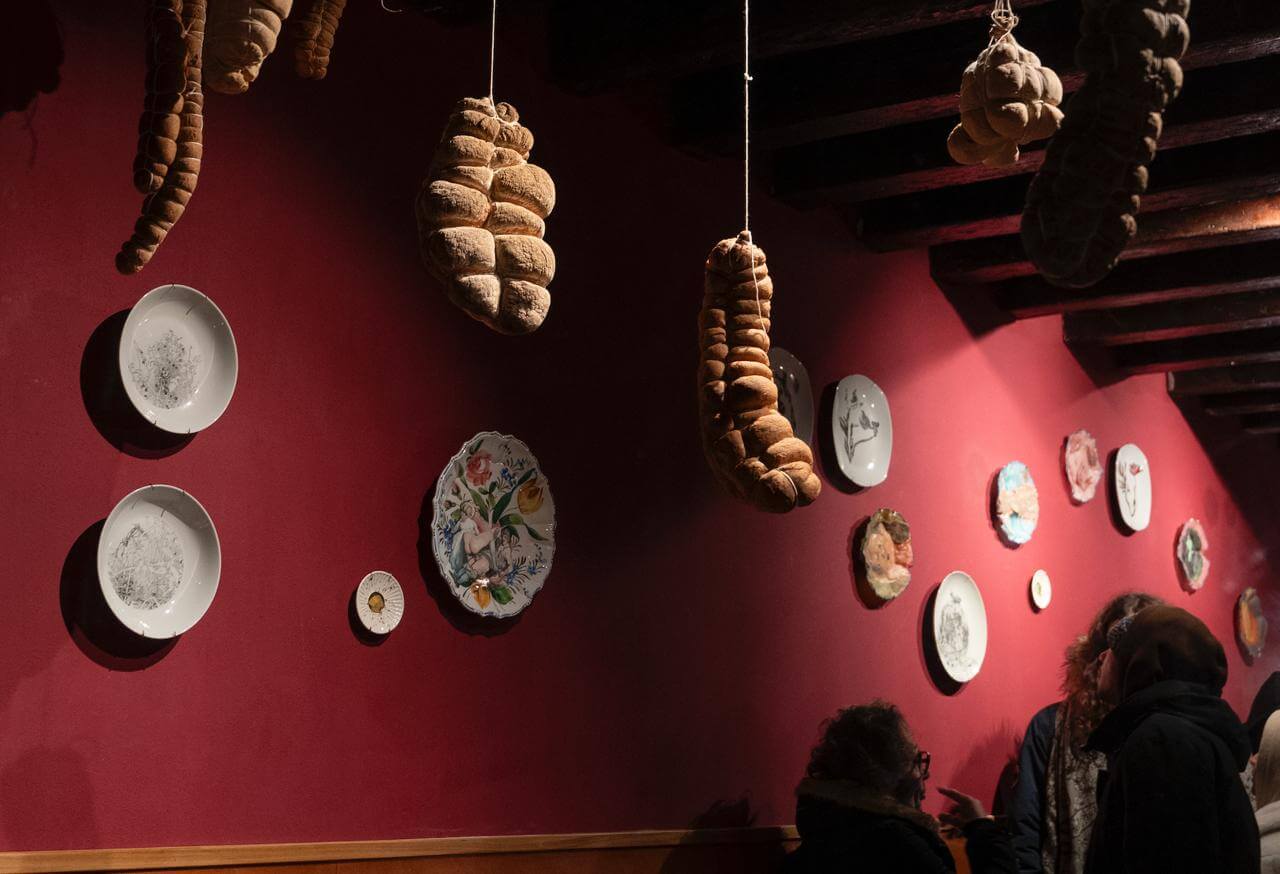
CANNAREGIO/MURANO
Cannaregio runs from the north of the lagoon, facing south along the Grand Canal. Moving from Rialto to Strada Nova, Campo Dei Miracoli is always worth a detour. Nearby, you will find Wentrup, a gallery recently opened in a historic space that once served as the atelier of the Italian fashion designer Roberta di Camerino.
Despite the many tourists, shops, and restaurants, Strada Nuova hides a series of Palazzi, some of which have long been used as exhibition venues; one such place is Palazzo Mora, home to the European Cultural Centre, which this year presents “Time Space Existence”, an exhibition also on view at Palazzo Bembo and Giardini della Marinaressa. Palazzo Mora presents the carbon-neutral housing project designed by Elemental, the firm led by architect Pritzker Prize winner Alejandro Aravena.
Heading towards Fondamenta della Misericordia, mass tourism gives way to a more residential area. On this route, you will find two new private institutions in the lagoon. One is located in Palazzo Diedo – Berggruen Arts & Culture, hosting the collateral event “The Next Earth: Computation, Crisis, Cosmology“. The other has just inaugurated a few steps further: AMA Venice showcases works from the estate of Belgian collector Laurent Asscher, renowned for his international vision and deep connection to Venice. Just behind the nearby Fondamenta della Misericordia you’ll find Wilmotte Foundation, established by the French architect Jean-Michel Wilmotte, which presents the award winners of the “W 2025 Prize“.
Cannaregio is also a wonderful spot to take a break in true Venetian style, enjoying natural wines and cicchetti. Along the Fondamenta della Misericordia, you will find the ever-popular Vino Vero, known not only for its exceptional wine selection and some of the best cicchetti in Venice but also for its engagement with art, presenting regular solo exhibitions displayed in its Wine Club window.
Continuing along the same bank, on the opposite side at Fondamenta delle Capuzine, Bea Vita Listening Bistrot has an excellent offer of Venetian food with contemporary reinterpretations and natural wines. The bistrot serves as a cultural hub, hosting exhibitions – currently “Amouse Bouche” by the Fondazione Malutta – as well as weekly DJ sets and a variety of events. Opposite Fondamenta Nove, you will see the island of San Michele, home to Venice’s historic cemetery. The island of Murano lies just beyond it. The island comes to life in September with the fabulous initiative The Venice Glass Week, which sets the furnaces alight with a rich programme of exhibitions and events throughout Murano and Venice.




